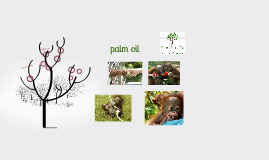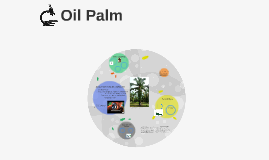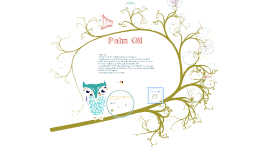Oil Palm
Transcript: Pest Management Phylogeny Breeding (UNEP, Environmental change hotspots, 2011). Forms of Palm Oil we SHOULD use Less land use What are current farming practices like? (Ngando-Ebongue, et al., 2012) Not an efficient or effective bio fuel Ecological limits Bred to produce more oil. Large investment- life span of palm, land. (Singh, et al., 2013) Oil Palm Sustainable vs Unsustainable Agriculture Berger K.G., Martin S.M. (2000). The cambridge world history of food. [Cambridge University.]Retrieved from http://dx.doi.org.ezproxy.lib.ucalgary.ca/10.1017/CHOL9780521402149.040 Chao C.T., Krueger R.R. (2007). The date palm (Pheonix dactylifera L.): Overview of biology, uses, and cultivation. Hort Science, 42(5), 1077-1082. Retrieved from: http://hortsci.ashspublications.org/content/42/5/1077.abstract Ngando-Ebongue G.F., Ajambang W.N., Koona P., Firman B.L., Arondel V. (2012). Oil palm. Technological Innovations in Major Oil Crops, 1, 165-200. doi: 10.1007/978-1-4614-0356-2_7 Plants for the Future. (n.d.). Retrieved from:http://www.pfaf.org/user/default.aspx Singh R., Ong-Abdullah M., Low E.L., Manaf M.A.A., Rosli R., Nookiah R., Ooi L.C., Chan K.L., Halim M.A., Azizi N., Nagappan J., Bacher B., Lakey N., Smith S.W., He D., Hogan M., Budiman M.A., Lee E.K., DeSalle R., Kudrna D., Goicoechea J.L., Wing R.A., Wilson R.K., Fulton R.S., Ordway J.M., Maritienssen R.A., Sambanthamuthi R. (2013). Oil palm genome sequence reveals divergence of infertile species in old and new worlds. Nature: International Weekly Journal of Science, 500, 335-339. doi: 10.1038/nature12309. USDA Foreign Agricultural Service. (2009). Indonesia: Palm oil production growth to continue. (Commodity Intelligence Report). Retrieved from http://www.pecad.fas.usda.gov/highlights/2009/03/indonesia/ United Nations Environment Programme. (2011). Oil palm plantations: Threats and opportunities for tropical ecosystems. (Report written by Moran L.S.) Retrieved from http://na.unep.net/geas/getUNEPPageWithArticleIDScript.php?article_id=73 Is it sustainable? Less than one hundred years of selective breeding produced 12 tonnes/hectare/year Food Security Early 20th Century popular world wide. Large Scale relocation of farming to Asia 1848. (USDA Foreign Agricultural Service, 2009). http://www.palmoilworld.org/environment.html. Sustainable Zingiber officinale- ginger root Musa acuminata- dwarf/edible banana Habitat loss http://greenpalm.org/about-palm-oil/what-is-palm-oil. Curcuma longa- turmeric - Should endorse healthy alternative of palm oil. Summary Deforestation (Singh, et al., 2013) (United Nations Environment Programme, 2011). Questions? Does palm oil agriculture harm the environment? Job creation Reduce carbon clearance (fixation) Palm Oil Uses Genus Elaeis Unbleached (United Nations Environment Programme, 2011). Cultivated/ Traded Is it healthy/ useful? (Singh, et al., 2013) Genetic Modification Family Arecaceae Does it have to? Could practices be changed? Species guineensis and oleifra WWF Message: Bio fuel References Control disease Decrease carbon clearance, alternative fuel NOT more eco-friendly Higher oil yield than any other edible-oil crop. Trading dates back to 3000 B.C ( found in Egypt) RSPO Should you endorse palm oil? Agriculture and Ecology Loss of ecological services from rainforest ("Plants for a Future", n.d.) (Berger & Martin, 2000) -Should know what you are eating so you can make an informed decision. - Should pressure companies to produce using sustainable palm oil. History and Biology 2007 (Singh, et al., 2013) unhydrogentated http://greenpalm.org/public/803/Images/palm-oil-tree-edit.jpg. Should Oil Palm be endorsed? Pheonix dactylifera- date palm Closest Relatives

















